ZRS-300P in the XXI century
By the mid-70s of the XX century, our military during the local conflicts in the Middle East and Southeast Asia had accumulated rich combat experience in the use of anti-aircraft missile systems. This primarily refers to the S-75 air defense system. This complex, originally created to combat high-altitude reconnaissance and long-range bombers, was quite effective against tactical and carrier-based attack aircraft aviation. Improvement of complexes of the S-75 family continued until the second half of the 70s. At the same time, the zones of fire were significantly expanded, the minimum height of destruction was reduced to 100 meters, the possibilities of combating high-speed and actively maneuvering targets were increased, the noise immunity was increased, and the mode of firing at ground targets was introduced. The most advanced serial version of the "seventy-five" - SAM S-75M4 "Volkhov", was adopted in 1978. The S-75 anti-aircraft missile systems of all modifications, being the most numerous in the anti-aircraft missile forces, were the backbone of the country's air defense forces until the mid-80s of the last century.
The experience of local wars has shown that, for all its merits, the C-75 air defense systems have a number of significant drawbacks. First of all, the military was not satisfied with the characteristics of the mobility of the complex. In the context of modern warfare, the survival rate of the air defense system directly depended on this. The use of anti-aircraft missiles with liquid toxic fuel and a caustic oxidizer also imposed a lot of restrictions and required the presence of a special technical position, where refueling and maintenance of missiles were carried out. In addition, the C-75 air defense system was initially single-channel in purpose, which significantly reduced the capabilities of a single complex when repelling a massive raid by enemy aircraft.
Proceeding from all this, the military demanded a multi-channel anti-aircraft complex with high fire performance and the possibility of firing a target from any direction, regardless of the position of the launcher, with all the elements on the self-propelled chassis. Work on the creation of a new C-75 replacement complex began at the end of 60-x, while another version of the seventy-fifth, C-75X5, was being developed as a safety net.
In 1978, the mobile, multichannel anti-aircraft missile system C-300PT with radio command solid-propellant 5В55К was adopted (more detailed here: Anti-aircraft missile system C-300P). Thanks to the introduction of a multi-purpose radar with a phased antenna array with digital control of the beam position, the possibility of quickly viewing the airspace with simultaneous tracking of several air targets appeared. In the C-300PT ZRS, launchers with four anti-aircraft missiles in transport-launch containers (TPK) were placed on trailers towed by tractors. The affected area of the first C-300PT variant was 5 - 47 km, which was even smaller than the C-75М3 SAMs with the 5Я23 SAMs.
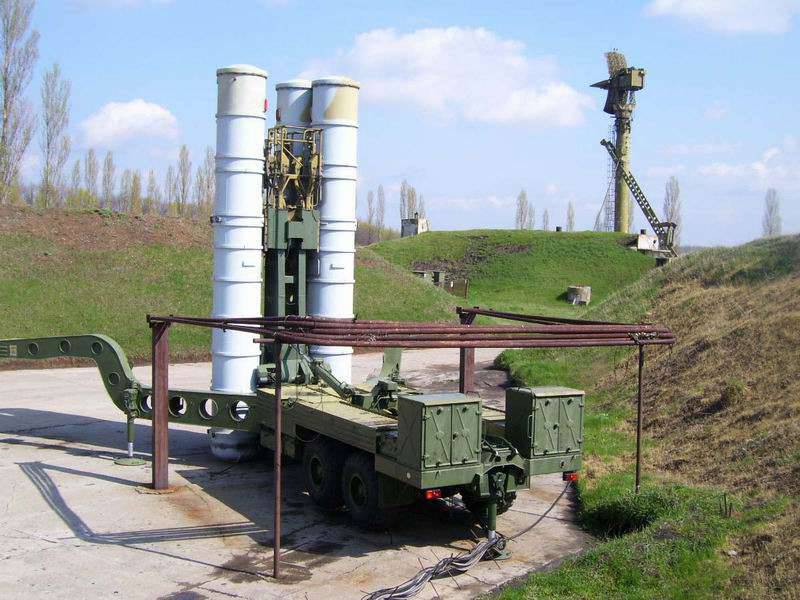
To remedy this situation, the 5ВХNUMXКД rocket was soon adopted, in which, due to the optimization of the rocket’s trajectory, the launch range increased to 55 km. Apparently, the use of radio-command missiles was a temporary forced decision, due to the unavailability of the rocket with semi-active homing. In the majority of anti-aircraft complexes created in the USSR, a fairly simple and well-developed radio command guidance system was used. However, the use of radio command guidance in long-range anti-aircraft systems was undesirable due to the deterioration of accuracy as the missile moved away from the guidance station. Therefore, the next step was the adoption in 75 of the 1981B5P SAM with a semi-active seeker. The launch range of the first modifications of this rocket was within 55 - 5 km, after the appearance of the 75В1984ПМ ЗР 5В55РМ in 90, it increased to XNUMX km.
The new version of the complex with the modified guidance equipment received the designation C-300PT-1. In the second half of the 80-x, the previously built C-300PT were repaired and upgraded in order to improve the combat performance to the level of C-300PT-1А.
In 1983, a new version of the anti-aircraft system - C-300PS. Its main difference was the placement of launchers on MAZ-543 self-propelled chassis. Due to this, it was possible to achieve a record short deployment time - 5 minutes.
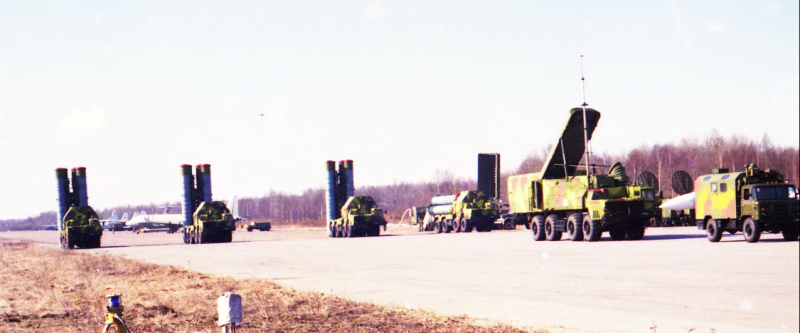
The S-300PS missiles have become the most widespread in the C-300P family, their production in the 80s has been carried out at an accelerated pace. C-300PS and even more advanced C-300PM with high noise immunity and improved combat performance were supposed to replace the first-generation C-75 complexes in the ratio 1: 1. This would allow the USSR’s most powerful air defense system in the world to reach a qualitatively new level. Unfortunately, these plans were not destined to be realized. C-300PM tests ended in 1989, and the collapse of the USSR had a negative impact on the production of this anti-aircraft system. Thanks to the introduction of the 48H6 rocket and the increase in power of the multi-function radar, the target destruction range increased to 150 km. Officially, the C-300PM was adopted in 1993, the supply of this complex to the Russian armed forces continued until the middle of the 90-s. After 1996, the air defense systems of the C-300P family were built only for export.
According to the American data, as of 1991, the USSR Air Defense Forces had about 1700 PU-300P of all modifications. The largest number of "three hundred" remained in Russia and Ukraine. C-300P also went to Armenia, Belarus and Kazakhstan.
Unlike the first-generation air defense systems: С-75, С-125, С-200, most of which were already removed from combat duty in Russia by mid-90-s, the more modern C-300П continued to serve. This is due not only to the greater effectiveness of the C-300P air defense system, but also to the fact that solid-fuel missiles are much safer in operation and do not require frequent expensive maintenance and refueling.
Shortly before the liquidation of the “Eastern bloc”, C-300P “lost its innocence” in terms of export deliveries. At the end of 80-x, a plan to strengthen the air defense system of the Warsaw Pact countries was adopted. Bulgaria and the Czech Republic managed to get the export version of C-300PS - C-300PMU. The scheduled delivery of the C-300PMU in the GDR was canceled at the last moment.
C-300P of various modifications are still the main anti-aircraft systems in the Russian Aerospace Force. Prior to this, in the course of incessant: “reforming”, “optimizing” and “giving a new look”, the anti-aircraft missile systems of the C-300P family were in service with anti-aircraft and missile forces in the united air forces and air defense and aerospace defense forces. In fact, the main tasks of the aerospace defense were to protect Moscow from air attack weapons and intercept single warheads of ballistic missiles. And in the EKO, as a rule, the most modern versions of anti-aircraft systems came in - this primarily relates to the C-300PM / PM2 and C-400.
Despite loud statements about “rising from the knees” and “rebirth”, our air defense forces for more than 10 years before 2007 have not received a single new long-range anti-aircraft system. Moreover, in view of the limiting wear and lack of standardized missiles, they were written off or transferred to the C-300PT and C-300PS storage bases built at the beginning-middle of 80-x.
The operation of the C-300PT air defense system continued in the European north of our country until the 2014 year. In 2015, they were replaced in positions C-300PM2, which had previously carried combat duty in the Moscow region. As new C-400 AAMS was launched, the upgraded C-300PM2, which previously covered the sky of the capital, relocated to the north.
The situation with the anti-aircraft cover of the territory of our country has ceased to deteriorate somewhere by 2012 year. Prior to this, the “natural decline” of anti-aircraft systems written off by old age exceeded the receipts of new troops. According to data published in open sources, in 2010, as part of the combined Air Force and Air Defense, there was an 32 air defense regiment of the C-300P and C-400 regiments. Most regiments 2-3 divisional composition. At the moment, according to freely available information, we have anti-aircraft missile 38 regiments, including the 105 divisions. The increase in the number of anti-aircraft units in the structure of the VKS occurred due to the transfer of several brigades armed with the C-300В and the Buk-М1 air defense system to the Land Forces and to unite with the EKO. Part of the anti-aircraft missile units of the Russian Aerospace Forces are currently in the process of re-equipment and re-formation.
About half of the troops in the air defense system are C-300PS whose age is approaching a critical one. Many of them can be considered effective only conditionally. It is common practice to carry combat duty in an abbreviated composition of military equipment. Immediate remedial action is required. But the pace of admission to the C-400 troops does not yet allow replacing all the old equipment to be written off. It is predicted that deliveries of the new C-350 air defense system, which was created to replace the C-300PS, will begin in the 2016 year.
The most recent C-300PS and almost all C-300PM to 2014, underwent a refurbishment and modernization. At the same time, the main part of the C-300PM was brought to the level of the C-300PM2. As a result, the anti-missile capabilities were expanded, and the range of destruction of the C-300PM2 ground strike system increased to 200-250 km. According to its combat characteristics, the upgraded C-300PM2 ZRS is close to the current C-400. Unfortunately, in the C-400 ammunition, already in service, 25 sdn still use the 48H6M and 48H6DM SAMs, originally created for the C-300PM. The massive supply of medium-range missiles 9М96 and long-range 40H6E, which allow C-400 to reach their full potential to the troops, is not yet underway.
Some of our high-ranking officials and the military are surprised at the statements that the C-400 anti-aircraft system is three times more efficient than the C-300PM, therefore, it needs three times less. However, at the same time they forget that the means of air attack of the likely "partners" also do not stand still. In addition, it is physically impossible to destroy a single anti-aircraft missile with a conventional warhead of more than one air target. Shooting at the landfills under the conditions of complicated jamming conditions has repeatedly demonstrated that the real probability of hitting a single missile with the C-300P ground-to-ground missile system is 0,7-0,8. To guarantee the defeat of a “difficult” target, you need to launch 2-3 SAM on it. Of course, the C-400 with the new missile surpasses any C-300P modification in range, altitude and noise immunity, but it is guaranteed to knock down one modern combat aircraft with one missile even with its own strength. In addition, no quality cancels the quantity, it is impossible to hit more air targets than there are anti-aircraft missiles ready for launch. In other words, if the ready-to-use ammunition is used up, then any, even the most modern and effective anti-aircraft system becomes nothing more than a pile of expensive metal and it is absolutely not important how many times it is more effective.
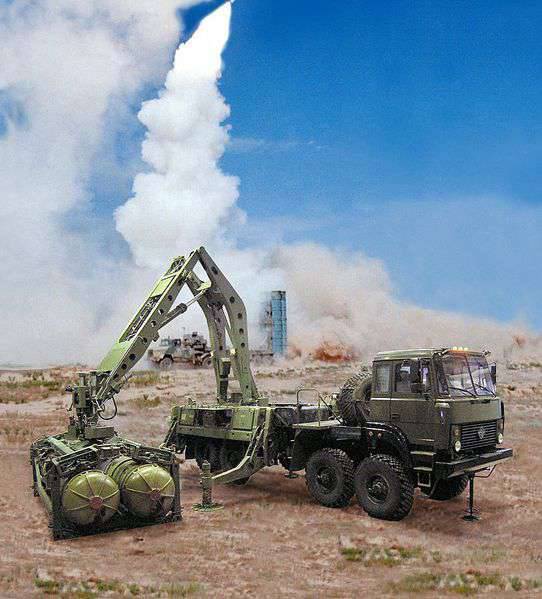
Among Russian citizens, there is an opinion, fueled by the media, that our C-300 and C-400 are a super-weapon capable of dealing equally effectively with aviation and cruise missiles, as well as with ballistic targets. And the existing number of anti-aircraft systems is abundant enough to “in case of anything,” whip up all enemy airplanes and missiles. It has also been heard that they do not cause anything but a smirk of the statement that there are a huge number of “sleeping” or “hidden” anti-aircraft complexes hidden under the ground or in the wilds of the Siberian taiga. And despite the fact that for the issuance of target designation to any anti-aircraft complexes, surveillance radars and communications centers are needed, as well as residential campuses with appropriate infrastructure for the accommodation of servicemen and their families. Well, by themselves, anti-aircraft systems among deaf taiga are not needed by anyone, only in the Soviet Union could they afford to build positions of the air defense missile system on the path of the intended flight of enemy aircraft, although even then most of the anti-aircraft complexes protected specific objects.
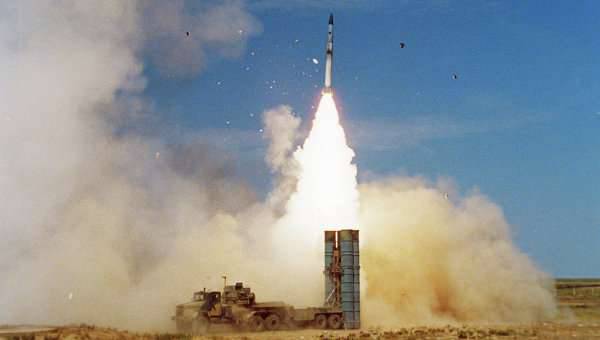
Many S-300P and C-400 SAM systems are associated only with launchers, from which effective missiles are launched at the range. In fact, the anti-aircraft divisions include about two dozen multi-ton machines for various purposes: command and control stations, radar detection and guidance, launchers, antenna posts, transport-loading machines and mobile diesel generators.
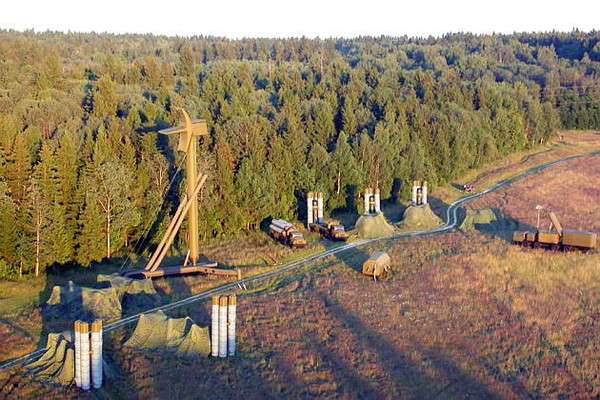
Like any weapon Our anti-aircraft missile systems have both advantages and limitations. So the main 5P85С ZRS C-300PS launcher on the MAZ-543М chassis with four missiles, separate missile training and control cabins and autonomous or external power systems weighs more than 42 tons with a 13 length and 3,8 meter width. It is clear that with such weight and dimensions, despite the four-axle base, the machine’s permeability on weak soils and various irregularities will be far from ideal. Currently, much of the C-300PM launchers and most of the C-400 are built in a trailed version, which, of course, is a step backwards in terms of mobility.
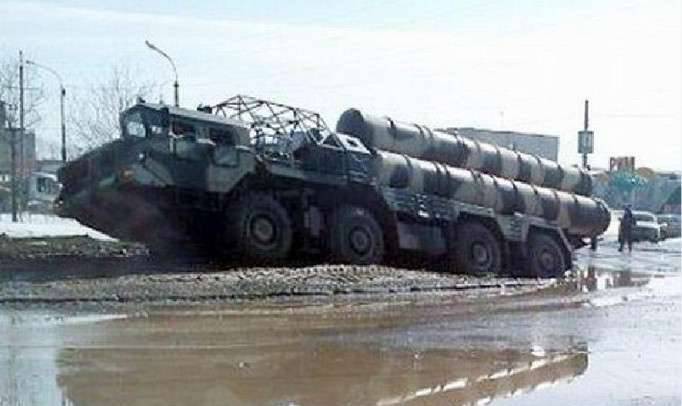
With high fire performance, the C-300P and C-400 ZRS have an extremely low PU reload rate. In a real combat situation, a situation may arise when all the ammunition for the launchers will be spent. Even if there are spare missiles and transport-charging vehicles on the starting position, a lot of time is required to replenish the ammunition. Therefore, it is very important that the anti-aircraft systems mutually cover and complement each other.
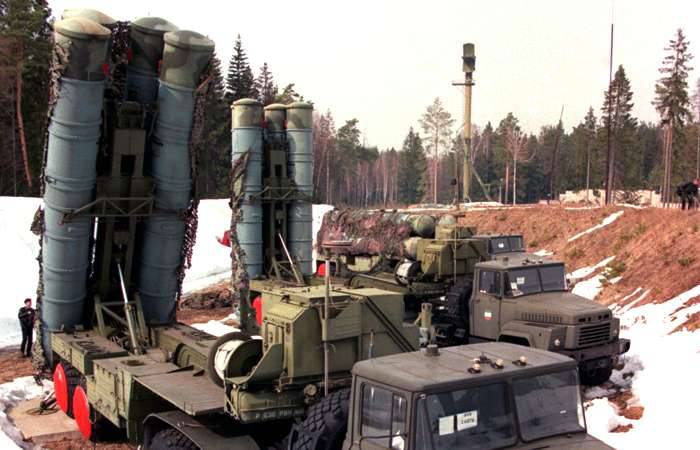
During the simulation, based on the results of real range firing, the specialists came to the conclusion that our long-range anti-aircraft systems, while protecting the covered objects, are capable of intercepting 70-80% of air attack weapons. It should be borne in mind that beyond the Urals we have significant gaps in the air defense system, especially from the north.
Currently, among the former Soviet republics of the USSR, the largest number of C-300Ps are formally available in Ukraine. In 2010, the “Square” sky was guarded by 27 srdn C-300PT and C-300PS. Due to critical wear, all C-300PTs are currently not operational. Part of the C-300PS SAM system has undergone a refurbishment and a “minor modernization” at the Ukroboronservice enterprise. According to expert estimates, the 6-8 anti-aircraft divisions of the C-300PS are now relatively effective in Ukraine’s air defense. But their decommissioning is the business of the next few years. The fact is that all the 5B55P SAM systems available in Ukraine have a long overdue shelf life. Several years ago, due to the provision of Georgian anti-aircraft complexes on the eve of the 2008 events of the year, Ukrainian representatives were denied access to the Russian C-300PMU-2. Considering the recent events, it seems an absolutely unbelievable option to deliver new missiles from Russia.
In 2015, there were reports of donations of used C-300PS to Belarus. It is obvious that Russia is trying in this way to push the anti-air frontiers as far as possible to the West.
Most likely, the anti-aircraft systems transmitted by the Belarusian military and anti-aircraft systems will be repaired and maintained in order to extend the resource. At the moment, the air borders of Belarus are guarded by 11 divisions of C-300PS, but most of them are serving in a truncated composition. Due to the shortage of serviceable equipment and standard missiles, the number of launchers in the majority of Belarusian missions is much less than the state.
Similar problems in maintaining the combat duty of anti-aircraft complexes in operational condition are experienced by the Kazakhstani military. This state has a huge territory uncovered by anti-aircraft means.
As of 2015, the year in the air defense forces of Kazakhstan four C-300PS antiaircraft battalions carried in a truncated combat duty. Obviously, the lack of modern anti-aircraft weapons explains the continued operation in Kazakhstan of the C-75 and C-200 SAM systems. At the end of December 2015, Defense Minister Sergei Shoigu announced the completion of the delivery of five C-300PS to Kazakhstan. The agreement on gratuitous provision of anti-aircraft systems to Kazakhstan was reached in 2013 year, within the framework of the agreement on the creation of a joint Russian-Kazakhstan single regional air defense zone. One can also note the important role of Kazakhstan in conducting joint exercises of the CSTO air defense forces at the Sary-Shagan training ground.
An important Russian ally in the South Caucasus is Armenia. In this republic, the sky is protected by four S-125 and four towed C-300PTs. Most of the anti-aircraft systems are located around Yerevan.
In 2015, information appeared about the planned gratuitous transfer of five more C-300PT divisions to the Armenian armed forces. It is envisaged that the C-300PT data, previously operated in Russia, will be restored and modernized.
The supply of anti-aircraft systems should occur within the framework of the agreement on the creation of a unified regional air defense system in the Caucasus region of the CSTO. In this case, the Armenian air defense system will become the most powerful in the region.
In 2011, three divisions of C-300PMU-2 and 12 PU in each ZRDN and 200 48Н6Е2 missiles were delivered to Azerbaijan. Before that, Azerbaijani calculations were trained in Russia. After the C-300PMU-2 in 2013 year began to carry out a permanent combat duty, in Azerbaijan began the write-off of the first-generation anti-aircraft systems C-75 and C-200.
Outside the CIS, the largest number of C-300P of various modifications is available in the PRC. The first batch of four C-XNUMPPMU and 300 SAM was delivered to China in the 120 year. Prior to deliveries, several dozen Chinese military and civilian specialists were trained in Russia. In 1993, 1994 missiles were additionally sent to the PRC.
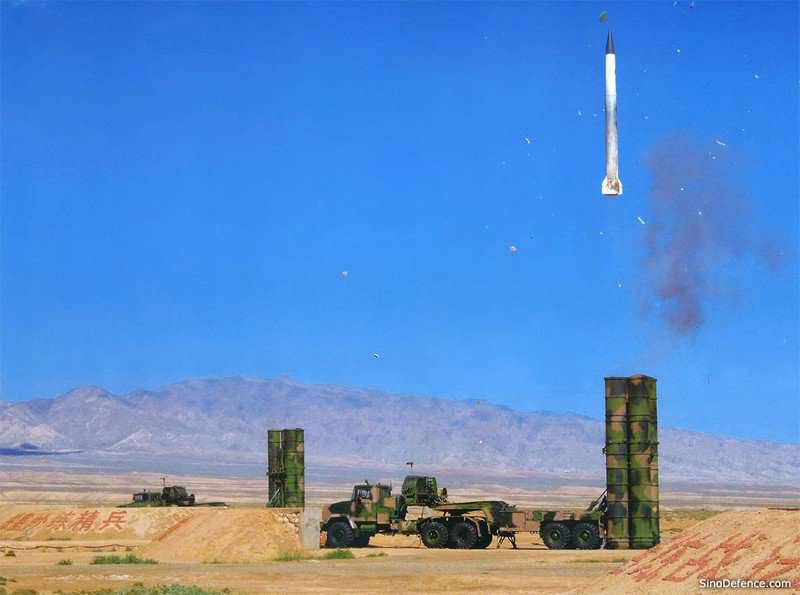
The C-XNUMPPMU ZRS was an export version of the C-300PS, in which the combat elements are located on trailers towed by KrAZ three-axle truck tractors.
Multichannel anti-aircraft systems with solid-propellant rockets developed in the USSR were superior in all respects to the Chinese air defense systems HQ-2, created on the basis of C-75. In 2001, a new contract was signed for the supply of another 8 divisions C-300PMU-1 and 198 48H6Е missiles. Soon after the fulfillment of this contract, China wanted to get more advanced C-300PMU-2 air defense systems, which had anti-missile capabilities. The order included 12 divisions C-300PMU-2 and 256 ZUR 48H6Е2 - these most modern anti-aircraft systems at that time could hit targets at a distance of up to 200 km. Deliveries of the first C-300PMU-2 to the PRC began in 2007.
China received a total of 4 Division C-300PMU, 8 Divisions C-300PMU-1 and 12 Divisions C-300PMU-2. In addition, each set of anti-aircraft division has 6 PU. In total, the C-24 divisions of all modifications delivered to the PRC of all modifications have 300 launchers of anti-aircraft missiles.
The main part of the existing in the PRC C-300P is deployed around important industrial and administrative centers along the east coast. When analyzing satellite images, the fact that Chinese C-300П systems, as a rule, do not linger long in one place, actively moving through previously prepared positions, attracts attention. Including for this purpose, launching pads of decommissioned HQ-2 SAM systems are used.
Active military-technical cooperation between Russia and the PRC has led to China's unlicensed copying of modern Russian weapons. The C-300P anti-aircraft system was no exception, on its basis in the PRC a HQ-9 was created. The export version of the Chinese air defense system, known as the FD-2000, is currently a competitor to the Russian long-range anti-aircraft systems in the global arms market. At the moment, a modernized version is being built in China - HQ-9A. Thanks to the improvement of electronic equipment and software, HQ-9A is distinguished by increased combat effectiveness, especially in the area of anti-missile capabilities.
Due to these circumstances, it seems strange to have a contract for the supply of four C-400 SAM systems to the PRC. This transaction was concluded, despite the statements made in the past, made from the highest tribunes, that C-400 under no circumstances should not be sold abroad until all the old complexes were replaced by the Russian Air Defense Forces. . It is quite obvious that China’s purchase of such a small number of anti-aircraft systems is made primarily for the purpose of familiarization, development of countermeasures and possible copying. In the future, the possible damage to our country from such a “partnership” can repeatedly block the immediate benefit.
Greece became the other owner of C-XNUMPPMU-300 in 1 after China. Initially, it was stated that Cyprus is the buyer of Russian ZRS. Subsequently, the C-1999PMU-300 were relocated to the Greek island of Crete, where in 1, during the exercise of Lefkos Aetos 2013, training shots were conducted. In 2013, the Russian and Greek representatives discussed the conditions for the allocation by the Russian side of a long-term loan for the purchase of new missiles and spare parts for anti-aircraft systems.
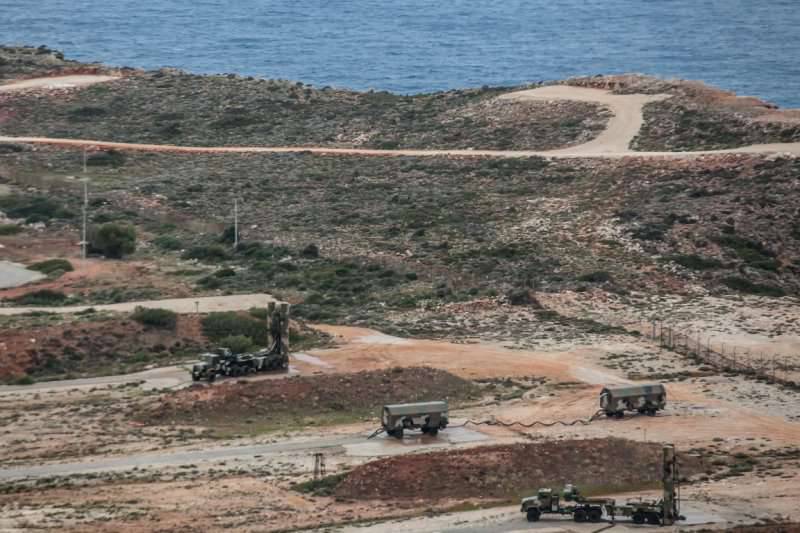
Currently, two C-XNUMPPMU-300 Greek divisions are located in the vicinity of the Kazantzakis airfield on the island of Crete. In April, joint exercises with the Israeli Air Force took place here in 1, during which Israeli combat aircraft learned to fight C-2015P.
At the “MAKS” held in August 2003, representatives of the Russian air defense concern “Almaz-Antey” announced that they had signed a contract for the supply of C-300PMU-1 air defense systems to Vietnam. In 2005, two divisional kits were sent to the customer through the state intermediary Rosoboronexport. According to Russian experts, Vietnam is strengthening its air defense system in connection with the aggravated territorial disputes with the PRC. C-300PMU-1 should replace the outdated C-75М3 SAMs in the vicinity of Hanoi and Haiphong.
In Bulgaria in May 2013, during the Collector's Item joint exercises, Israeli and American combat aircraft based at the Graf Ignatievo airbase practiced methods of dealing with the S-300PMU available in Bulgaria.
For one anti-aircraft division C-XNUMPPMU there is in the armed forces of Bulgaria and Slovakia. Despite the fact that these countries are switching to NATO weapons standards, they are still not in a hurry to abandon Soviet-made anti-aircraft systems. In June 300, during the visit of Slovak Prime Minister Robert Fico to Moscow, the parties discussed the details of the contract for the repair and modernization of the Slovak C-2015PMU.
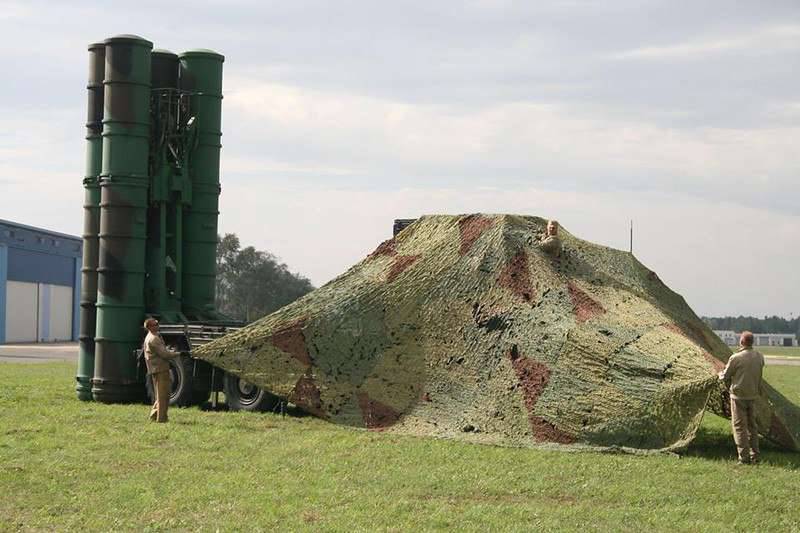
Undoubtedly, American specialists had the opportunity to get acquainted in detail with the Greek, Bulgarian and Slovak anti-aircraft systems. All of these countries that are armed with the C-300P are members of the NATO bloc. But the most blatant fact was the delivery of elements of the Russian C-1995PS to the 300, through Belarus to the USA. Later, the missing parts of the system were acquired by the Americans in Ukraine. When buying C-300 elements, the Americans were primarily interested in the command post 5Н63С with multifunctional radar of illumination and guidance (RPN) 30Н6 and mobile 3-X coordinate radar 36Д6. Of course, they did not set themselves the goal of copying the Soviet anti-aircraft system, it was hardly possible, and it probably didn’t make sense. The purpose of the special operation was to study the performance in terms of detection capabilities, capture and tracking of targets with different EPR values, as well as the development of countermeasures in the fight against air defense, based on C-300P. Available in the US RPN and 36D6 radar are currently on the proving ground in the Nevada desert. They regularly take part in US Air Force exercises in the area.
In 2007, a contract was signed for the supply to Iran of five C-300PMU-1 divisional ZRS sets. However, in 2010, the then Russian President Dmitry Medvedev, in connection with the introduction of international sanctions against the initiative of the United States at the initiative of the United States, canceled this agreement and ordered to return the advance. This caused serious damage to Russian-Iranian relations and Russia's reputation as a reliable supplier of weapons. The dispute over this between Tehran and Moscow lasted for about 5 years. Finally, in April 2015, President Vladimir Putin lifted the ban on the supply of C-300 to Iran. It is expected that the first batch of anti-aircraft missile systems will be shipped in the first half of 2016. However, it is not quite clear what modification C-300 will be and where they will come from. As is well known, the construction of the C-300P of all modifications in our country was discontinued several years ago. At the production facilities, where the construction of the C-300P was carried out, the assembly of the next-generation air defense systems, C-400, is currently underway. It is possible that the capitally repaired and modernized C-300PM from those that are in our armed forces will be used to fulfill the Iranian contract.
Based on the ZRS family of the C-300P family, Iran is developing its own long-range anti-aircraft system, Bavar -373. Separate elements of the Iranian anti-aircraft system were demonstrated on 18 on April 2015 of the year during the military parade in Tehran.
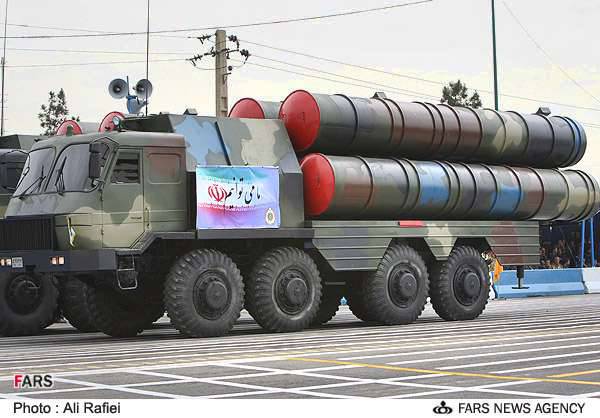
According to the statements of high-ranking Iranian military, the development of Bavar-373 began after Russia refused to supply C-300PMU-1. Allegedly, for several years, Iranian specialists managed to create an anti-aircraft system, which in its characteristics surpasses the C-300P. It is expected that the Bavar -373 air defense system will be put into service in 2017 after the tests are completed.
The anti-aircraft system, in many respects reminiscent of the C-300P, was also created in the DPRK. It was first demonstrated at a military parade in Pyongyang in 2012. In the west, the new North Korean anti-aircraft complex is known as KN-06.
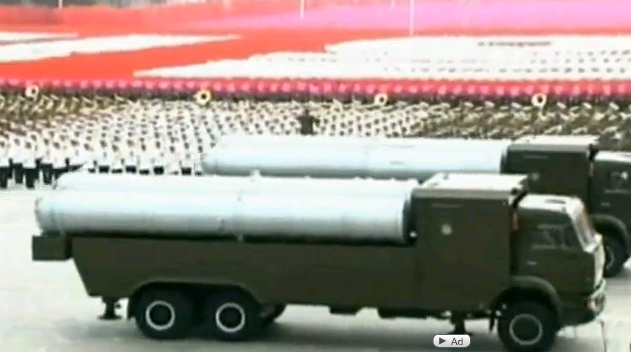
The ability of Iranian and North Korean science and industry to create modern long-range anti-aircraft systems with missiles that have semi-active or active homing causes great doubts. But even if the Iranians or the North Koreans managed to create a vertically launched TPC missile with radio command guidance, according to their data, comparable to the first C-300PT missiles - this is certainly a great achievement for them.
Currently, the C-300P long-range anti-aircraft missile systems and the C-400 based on them form the basis of the Russian anti-aircraft defense forces. Being one of the most effective means of dealing with the air threat, over the next decades they will protect the sky of our homeland. The unique technical solutions implemented in them serve as a role model for creating a number of foreign analogues.
Based on:
http://pvo.guns.ru/s75/s75.htm
http://geimint.blogspot.ru/2008/06/worldwide-sam-site-overview.html
http://nvo.ng.ru/armament/2010-02-19/1_diagnoz.html
http://bmpd.livejournal.com/257111.html
http://www.china-defense.com
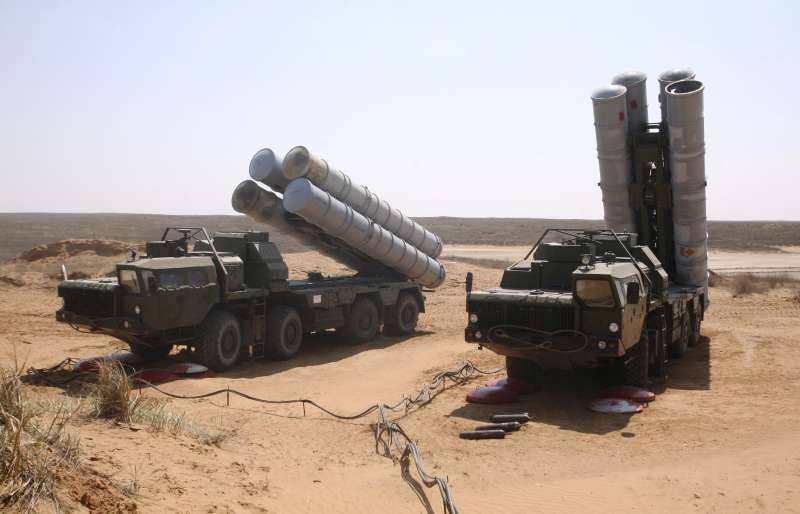
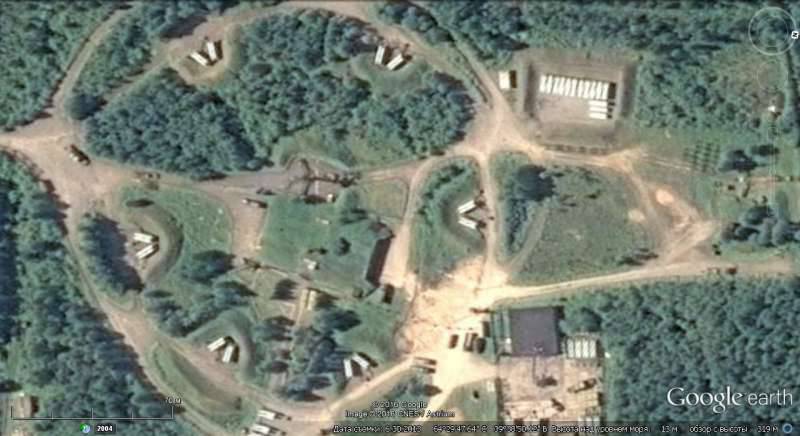
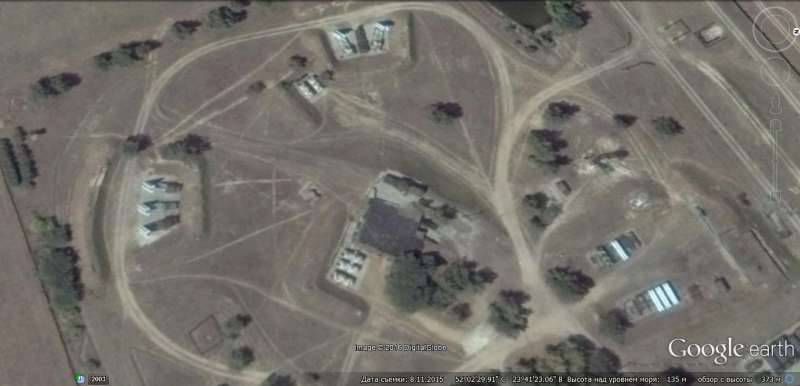
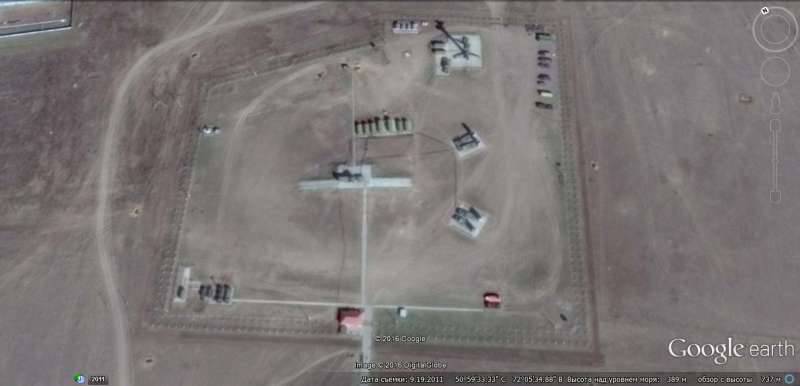
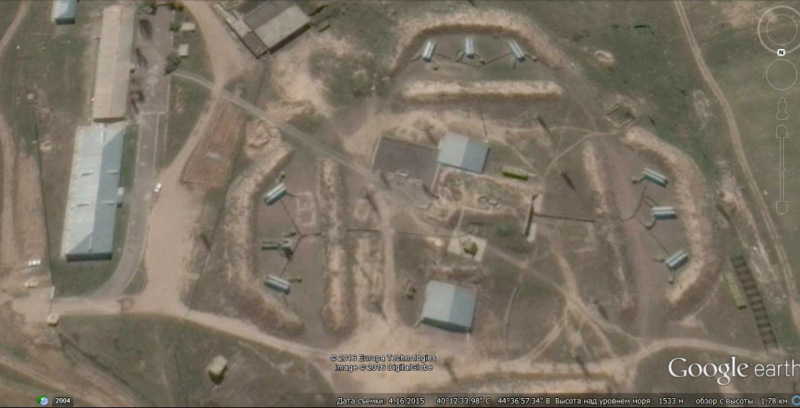
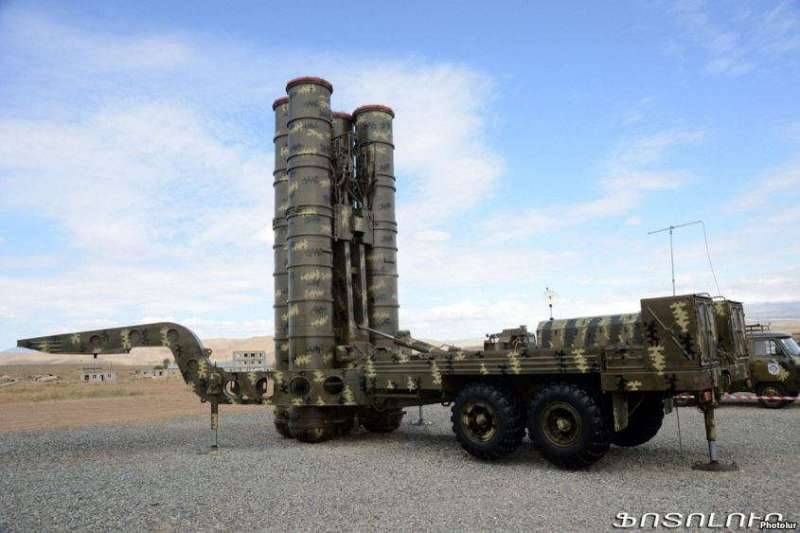
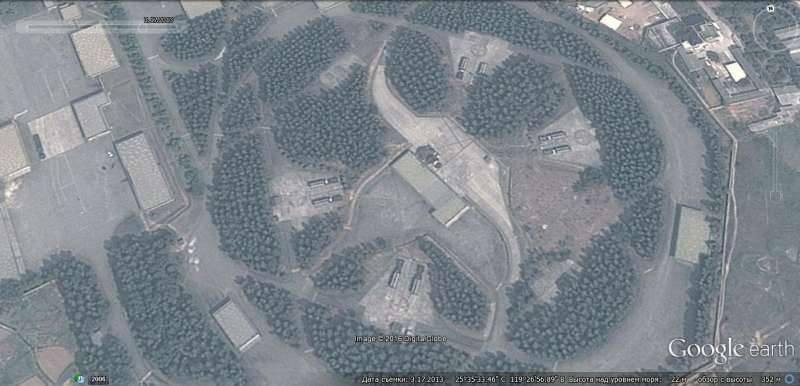
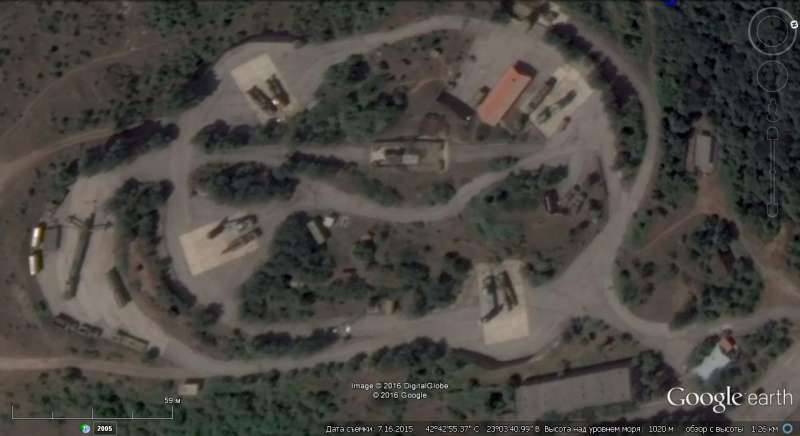
Information